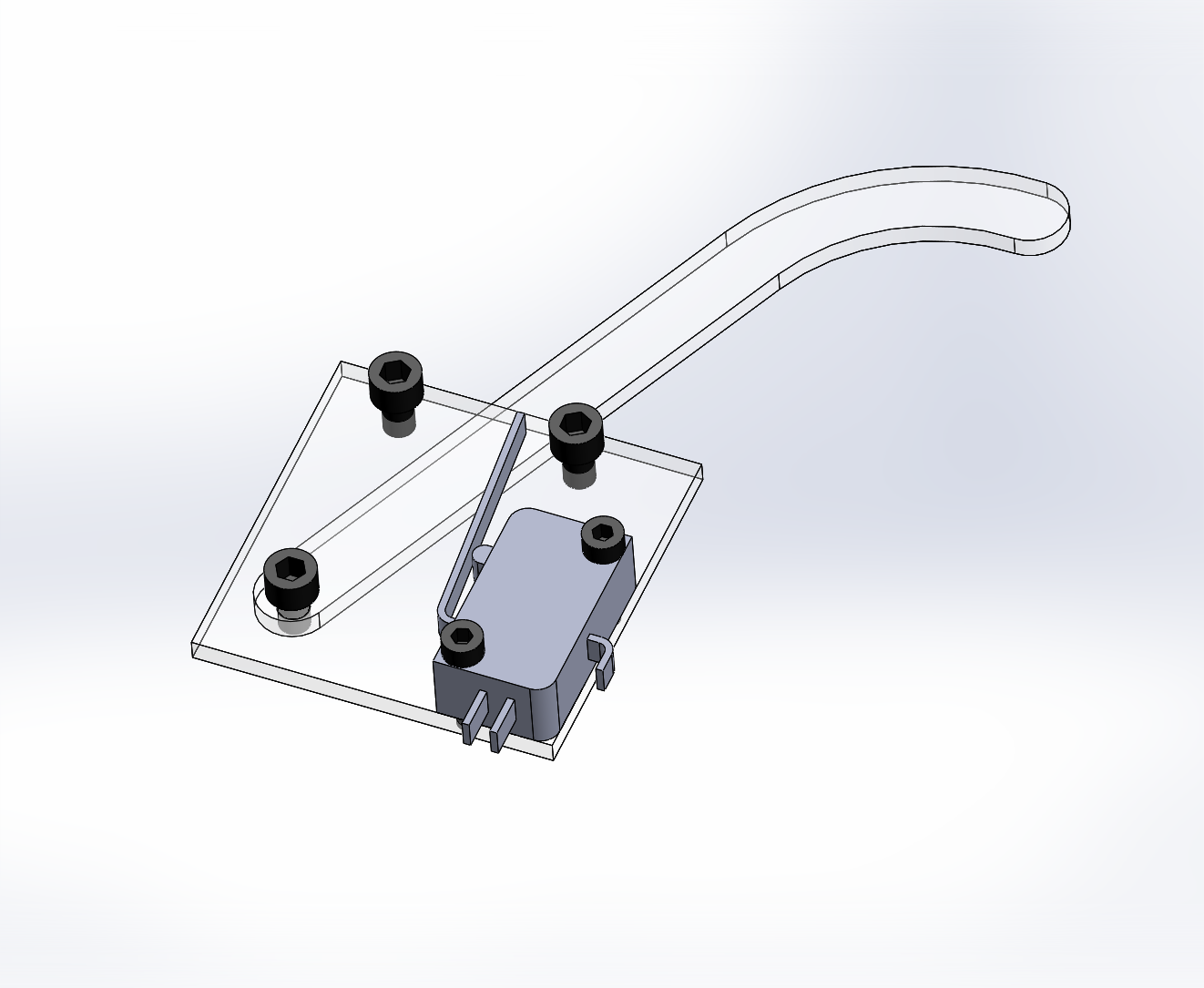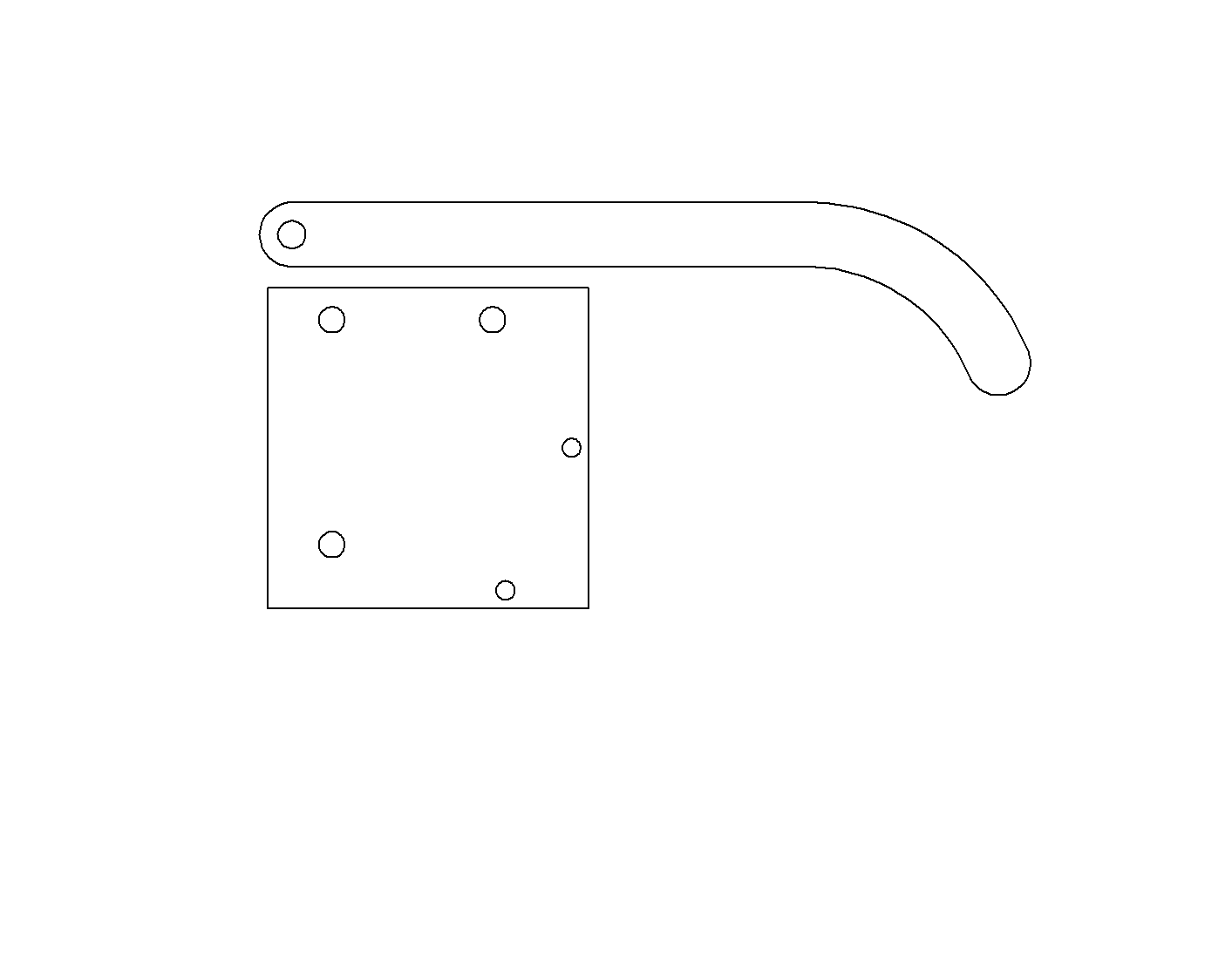2.1.29. Exercise: Mechanisms for One-Bit Sensing¶
2.1.29.1. Objective¶
Design and test a simple mechanical transmission which couples a mechanical state of interest to a one-bit sensor such as a microswitch.
2.1.29.2. Overview¶
Simple two-state sensors are found throughout many machine designs. They are often the most efficient feedback solution in terms of cost, complexity and robustness. Essentially, they reduce the state of the world down to one bit with carefully chosen semantics, the most reductionist state model possible. This was phrased elegantly in a 1983 essay by the late Professor John McCarthy:
Keep in mind that the thermostat can only be properly considered to have just three possible thoughts or beliefs. It may believe that the room is too hot, or that it is too cold, or that it is ok. It has no other beliefs; for example, it does not believe that it is a thermostat.
In actual practice, many furnace-only thermostats have only two beliefs: it is too cold, or it is fine.
The key is arranging the physical design of the system to respond to the world state in a bimodal way. This exercise explores this idea in practice through a simple limit switch arrangement.
2.1.29.3. Exercise Details¶
For this exercise, we are providing a sample design to explain the idea, but we would like you to draw your own design from scratch. However, the sources for the design can be found in the physcomp-solidworks git repository on github.
A common use of switches in machine design is as a limit switch which detects when a movement has reached one end of the acceptable limit of travel. This is a type of one-bit touch sensor which uses the fact that the presence of an object pressing on the switch can have only one meaning, namely, that the axis has traveled too far. The same approach applies to door switches, drawer switches, and through-beam limits: the activation of the switch can have only one semantic meaning in the context of the process, so it is useful as a one-bit sensor.
The example below is a simple lever extension of a microswitch with the following features: the pivoting lever responds to an object brushing past the curved end, the two limit-stop screws prevent the lever from either damaging the switch or leaving the sensed region, and the switch flag can be bent for fine-tuning the exact threshold.
2.1.29.4. Steps and observations¶
- Choose a simple mechanical process from which to sense a one-bit state. Some ideas: motor reaching a limit, door opening, person bumping a table, hook catching a ring, weight exceeding a limit, etc.
- Analyze the movement to determine what mechanical position could serve as a threshold for the state of interest.
- Design a simple mechanism to couple the movement to a binary sensor. The example below can serve as a starting point. A microswitch is a good sensor for this test as it is cost-effective and power-efficient. You may also use a magnet and Hall effect sensor or a photointerrupter and flag if either are more suitable.
- Be sure to include travel limits as necessary to keep the sensor itself in a safe condition.
- Test your mechanism. Does it reliably trigger on the condition of interest? Can you find conditions which induce false positives or false negatives? How much did you expand the range of motion of the sensor?
2.1.29.5. Comments¶
This exercise actually understates the potential of one-bit sensors, because the other available axis is time. A one-bit sensor activating over time can be viewed as a binary trajectory which can reveal much about the underlying process via statistical analysis or machine learning.

